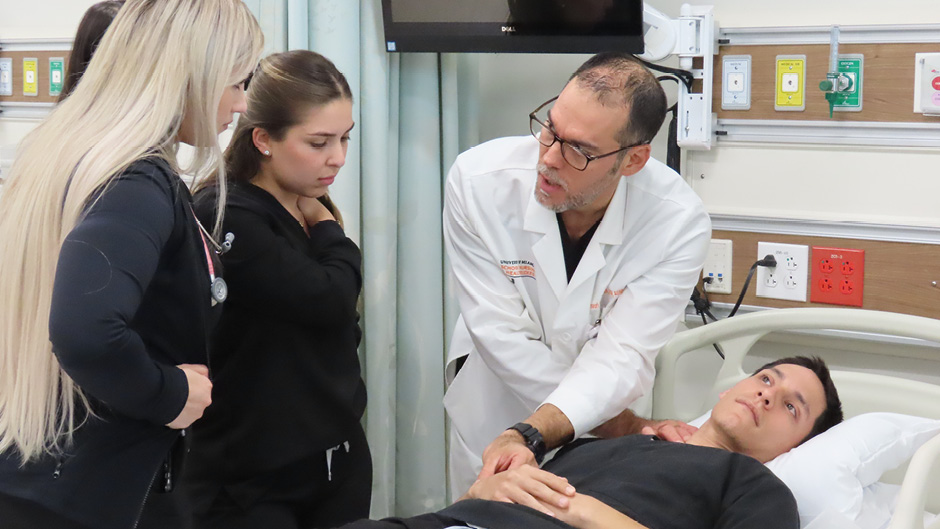Describe for me your journey through nursing education and how it led you to where you are today.
Growing up in Cuba, I attended medical school before moving to Jamaica at 20. After four years in Jamaica, I relocated to the United States and began working at Home Depot for nine years. While there, I studied English at Miami-Dade College and started my nursing career from scratch. In 2007, I earned an Associate of Science in Nursing and worked as an RN at South Miami Hospital for eight years while also pursuing a BSN at Miami-Dade College.
I continued my education and obtained my Master of Science in Nursing degree at the University of Miami School of Nursing and Health Studies, finishing in 2015. After graduation, I worked with an orthopedic surgeon for two years before becoming a Simulation Nurse Educator. I’ve been teaching students in the graduate program at SONHS since 2017. During my time working here, I also completed my DNP here in 2020, received my psychiatric mental health nursing post-graduate certificate in December 2022, and earned the family nurse practitioner post-master in August 2023. Along with my role as a simulation educator at SONHS, I continue to practice at a primary care clinic.
When you were first offered the position of simulation educator, what attracted you the most about the position?
I discovered my passion for teaching while precepting new nurses and graduate students. Although the simulation position at the start was challenging, I recognized it as a valuable opportunity to gain experience, and I worked hard at developing the skills necessary to train others. Being given this platform to educate our future nurse practitioners has been a tremendous opportunity that I was thrilled to embrace.
Who are some of the people who have supported you on this journey?
I feel incredibly thankful for the support of my family, particularly my wife Ana and my two sons Fabrizio and Fabian. There are countless people to whom I need to express my gratitude, from faculty at SONHS to colleagues and friends who have encouraged me throughout my career. Their unwavering support has meant the world to me, and I will never forget their kindness.
Talk about some of the work you do here, inside and outside the classroom.
I work in simulation with my colleague, Dr. Michelle Arrojo, and together, we have become a formidable and robust team for our students. Together, we also lead the lab component of the Advanced Health Assessments course, which provides students with hands-on practice. Witnessing their growth as they learn inspires me. I am constantly reading, studying, and preparing myself to give the best possible education to our students, which is my primary motivation.
After having been in the position for a few years, what is your favorite part of using simulation to teach?
As a simulation enthusiast, I find great pleasure in multiple areas. One of my favorites is that of a simulated patient, where I strive to fully embody the character and bring the scenario to life, providing students with an authentic experience. Additionally, I thoroughly enjoy debriefing sessions, which provide a low-stress environment for students to learn from their mistakes or reinforce what they already know. Witnessing their growth and comfort in this setting brings me immense joy.
How have you witnessed the rise of simulation affect nursing education, and how do you see it advancing in the future?
I am amazed by the impact of simulation in nursing, and I can attest to its effectiveness based on several facts. When simulations are incorporated early in the program, we observe significant progress and better outcomes at the end of the course. This safe and non-judgmental environment encourages students to make, reflect on, and learn from mistakes freely. It’s undeniable how popular simulation is getting, and while I understand the benefits, I emphasize in my teachings not to forget about the importance of human interaction. Human beings desire a listening ear, physical touch, and genuine care.

